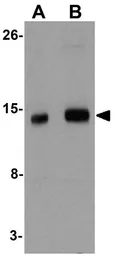IFITM1 antibody
Cat. No. GTX85181
Cat. No. GTX85181
-
HostRabbit
-
ClonalityPolyclonal
-
IsotypeIgG
-
ApplicationsWB ICC/IF ELISA
-
ReactivityHuman, Mouse, Rat


